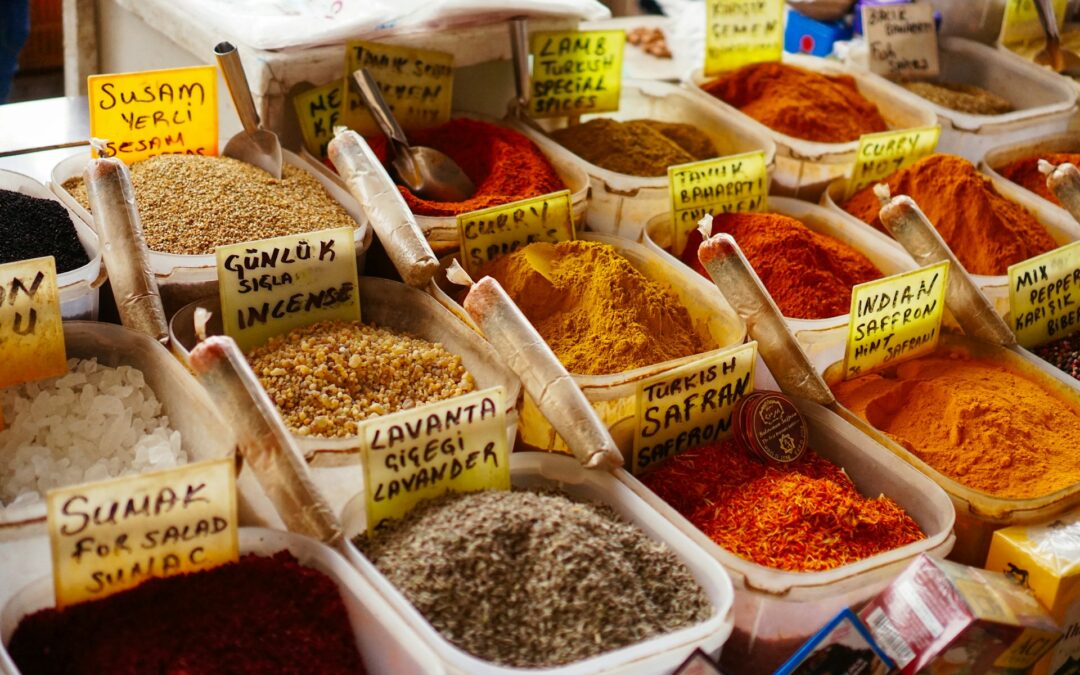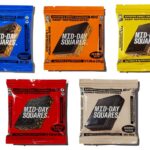Bland Is Out: Why Food Brands Are Betting Big on Bold, Global Flavors
For years, food companies have relied on the safe and familiar.
Vanilla. Hazelnut. “Original flavor.” These staples filled supermarket shelves and dominated menus, especially in mainstream American markets. But today’s consumer has changed—and the food landscape is shifting dramatically.
Thanks to global influences, TikTok virality, and an appetite for accessible luxury, the era of bland is over. If you’re considering building a food brand in 2025, you need to know that flavor innovation is no longer a niche strategy. It’s the norm.
The Rise of the Global Pantry
The post-2020 food consumer is more adventurous than ever. During pandemic lockdowns, millions of people began cooking at home—not just out of necessity, but out of curiosity. With time to explore, many turned to cuisines outside their cultural backgrounds. Lebanese, Korean, Persian, Vietnamese, West African, and South Asian flavors moved from specialty shops to everyday staples. That shift stuck.
Today’s grocery carts are filled with ingredients like gochujang, sumac, miso, and black sesame. These are no longer fringe additions; they’re the building blocks of the modern pantry.
And this isn’t a coastal elite phenomenon.
Beck Flavors, a 100-year-old Missouri-based flavor house, recently named miso caramel a flavor of the year. This insight reveals how deep the appetite for bold and international flavors runs—even in historically conservative markets.
Eight Brands Leaning Into Flavor Innovation
Let’s look at how startups and household names are riding the flavor wave:
Pistakio: A 2023 upstart, Pistachio launched a pistachio spread positioned to rival peanut and almond butter. But it’s more than just a nut butter alternative; it’s tapping into Mediterranean flavor profiles and the growing love for pistachios in desserts and breakfast foods. Its branding is bright, luxurious, and bold. This isn’t your grandma’s sandwich spread.
Van Leeuwen Ice Cream” This brand has been ahead of the curve for years. While others played it safe with vanilla bean, Van Leeuwen leaned into Earl Grey tea, hot honey, and brown sugar chunks with Boba. Its seasonal flavors are often read like the pantry of a global food blogger, and consumers line up for them.
Jeni’s x Fly By Jing: The cult-favorite ice cream brand Jeni’s teamed up with Fly By Jing, the Chinese-inspired spice company, to release an ice cream flavored with Sichuan chili crisp. What could have been a gimmick became a viral hit—and a retail sellout.
Starbucks: Not traditionally known for radical flavor moves, even Starbucks has jumped in—one recent example: the Iced Lavender Cream Oat milk Matcha. The combo—herbal, floral, earthy—is far from the basic latte. And it signals a major player adapting to evolving taste expectations.
Muji’s Yuzu Products: The Japanese lifestyle brand has introduced a range of yuzu-infused foods—from teas to sweets—reflecting a broader fascination with Japanese citrus. Yuzu is tart, fragrant, and complex—everything the modern consumer wants.
Omsom: Omsom is a shining example of a brand that’s made global flavor its entire identity. Co-founded by Vietnamese sisters Vanessa and Kim Pham, Omsom sells shelf-stable meal starter kits that bring unapologetic Southeast and East Asian flavors to home kitchens—think Vietnamese Lemongrass BBQ, Filipino Sisig, and Thai Larb. Each starter comes with pre-mixed sauces crafted by acclaimed chefs from the respective cultures. What sets Omsom apart is not just the flavors—it’s the tone. Their branding is loud and proud and rejects many grocery store products’ “clean, neutral” aesthetic. They’re not aiming to “soften” these flavors—they’re celebrating them in full.
Brightland: Known initially for its beautifully bottled olive oils, Brightland has expanded into vinegar and honey infused with unexpected ingredients like champagne, raw Maui pineapple, and cayenne pepper. Their products sit at the intersection of pantry staple and premium indulgence, with flavor blends like Chili Balsamic and Persimmon Vinegar. Brightland has mastered the art of turning everyday basics into gourmet essentials—while tapping into regional and seasonal ingredients that evoke place, origin, and terroir.
McConnell’s Fine Ice Creams: This California-based heritage ice cream company has reinvented itself for the modern palate. In addition to classic offerings, McConnell’s regularly rolls out flavor innovations like Turmeric Ginger, Cardamom & Sweet Cream, and Makrut Lime & Coconut. These aren’t one-off experiments—they reflect a long-term strategy to court curious consumers who are done with “cookie dough again?” Their approach is an innovative blend of nostalgia and novelty, keeping a trusted format (ice cream) while challenging expectations around what it can be.
These brands succeed because they go beyond just “being different.
They understand why today’s consumers are seeking these flavors—whether it’s for cultural connection, emotional resonance, or just an exciting new experience. They show that bold flavor is more than a trend—it’s a business strategy.

Why Understanding that Bland is Out Matters
The shift isn’t just about flavor. It’s about storytelling. Modern consumers—especially millennials and Gen Z—don’t just want something that tastes good. They want something that means something.
That might be about reconnecting with heritage (as Axios journalist Natalie Daher described when experimenting with Lebanese ingredients during lockdown) or about feeling worldly and in-the-know. Food has become a form of self-expression. Posting a photo of your ube tiramisu or matcha mochi cake isn’t just about aesthetics; it’s a subtle signal of cultural literacy and palate sophistication.
How Virality and Nostalgia Fuel Flavor Trends
Social platforms, particularly TikTok and Instagram, are pivotal in accelerating these trends. A traditional dessert like tiramisu goes viral when someone swaps espresso for matcha or layers in ube cream. This culture is now a marketing engine for food brands.
Not only do consumers expect new takes—but they’re actively seeking them out.
But while novelty gets attention, nostalgia anchors it. That’s the brilliance of combining familiar formats (like ice cream, cookies, spreads) with unexpected global ingredients. It’s just new enough to intrigue but familiar enough to try.
Three Takeaways for Building a Food Brand Today
If you’re starting from scratch, the path to white space lies in understanding the emotional and cultural dynamics behind these flavor shifts, not just chasing heat maps on trend reports. Here’s how to approach it:
1. Start With Emotional Utility, Then Layer in Flavor
Don’t start with “What’s trending?” Instead, start with “What does the consumer need to feel right now?” Is it comfort? Escape? Luxury? Belonging? Once you know that, build your brand’s flavor universe to deliver on it. For example, lavender and cardamom aren’t just exotic—they evoke calm and wellness, two major post-pandemic drivers.
2. Think Like a DJ, Not a Chef
Today’s most successful food brands remix. They take the structure of something familiar and add just one or two high-impact flavor twists. Think: matcha tiramisu, saffron chocolate chip cookies, za’atar popcorn. You don’t need to reinvent the wheel—change the seasoning.
3. Mine Diaspora and Regional Cuisines Thoughtfully
Look beyond pan-Asian or pan-Mediterranean generalizations. The brands that win long-term are specific, respectful, and collaborative. Partner with creators, chefs, and communities representing the flavors you’re showcasing. That authenticity matters more than ever in a world saturated with spin-offs.
The move away from bland isn’t just a flavor trend—it’s a branding imperative. Consumers are no longer content with neutral tastes and beige packaging. They want vibrancy, story, and surprise. Whether you’re developing a hot sauce brand, a snack line, or a next-gen beverage, your flavor profile is now one of your most powerful storytelling tools.
The market is ready for you if you’re brave enough to embrace complexity, examine global influences, and make bold choices.
Remember: it’s not about being “exotic for exotic’s sake.” It’s about creating meaningful flavor moments that connect people to something bigger—culture, memory, or simply joy.
Bye, bye, bland.
Photo by sonia tayouri on Unsplash
Photo by Tom Hermans on Unsplash
Connect with Jeff at The Marketing Sage Consultancy. Interested in setting up a call with me? Use my calendly to schedule a time to talk. The call is free, and we can discuss your brand and marketing needs.
If you want to learn more about my new offering, The Trusted Advisor Board, you can click here to learn the details. Feel free to email me at jeffslater@themarketing sage.com or text 919 720 0995. Thanks for your interest in working with The Marketing Sage Consultancy.





